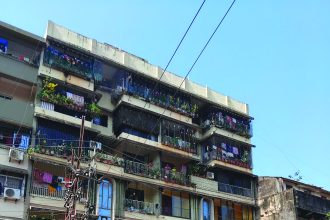Abdul Wahab Khan
Panaji
A topographical survey of Panaji’s storm water drainage network has exposed deficiencies in flood management infrastructure, documenting approximately 302 disconnected points across the system, revealing that most drainage openings are clogged with debris, municipal waste, and even plastic cups.
The six-month-long comprehensive study, conducted by Deutsche Gesellschaft für Internationale Zusammenarbeit (GIZ India) in partnership with Imagine Panaji Smart City Development Limited under the ‘Urban-Act’ project, is the first systematic mapping of the city’s entire 92-kilometre drainage network, providing crucial data for climate-resilient
urban planning .
It is pertinent to note that Panaji grapples with increasingly intense monsoon flooding.
Findings of the survey, conducted between September 2024 to February 2025, have pointed to a concerning picture of infrastructure neglect and design inadequacies.
Covering 70 kilometres of closed surface drains, 18 kilometres of open channels, and 0.77 kilometres of underground drains and Hume pipes, the mapping exercise has documented drainage widths, top and invert levels at 1,726 confluence points, and has recorded 2,428 invert levels across the network.
The report has revealed that “most of the kerb drains are covered with concrete slabs”, critically noting that “these openings often become clogged with debris, silt, and municipal waste.”
The study has further documented that various items of plastic, paper, and paper cups obstruct drainage pathways, while surface runoff moves at a high velocity, rendering the clogged and diminutive openings completely “ineffective in capturing the runoff into the drains, which can lead to flooding.”
The survey has also examined Panaji’s 1,003 manholes – 251 sewerage manholes covered with iron and steel lids and 752 OFC concrete-based manholes.
The report has observed that the old manholes are not properly maintained, and some have not been opened for cleaning for a long time.
The research has mapped 70.78 km of roads, detailing width, alignment, and height profiles. It has found mostly bitumen, concrete, and tile surfaces, with irregularities, encroachments, potholes, and uneven pavements.
The rationale behind this ambitious exercise stems from mounting climate vulnerabilities. The report has emphasised that “as a coastal city, Panaji is increasingly vulnerable to recurrent urban flooding due to intense rainfall” coupled with outdated drainage infrastructure.
Positioned at a mere seven metres above sea level, the city relies on three natural, partially navigable creeks—Chimbel, Ourem, and Santa Inez—representing what the report has characterised as an aging system inadequately equipped for contemporary climate challenges.
Key field observations have documented that the drainage system is “broadly divided into four major zones,” with runoff from the Altinho hillock flowing into Mala Lake and Fontainhas areas before continuing into Ourem creek and the Mandovi river, while northern drainage flows into the Mandovi through surface and deep drains, runoff from St Inez channeling into St Inez Creek, and southern portions discharging directly into the Arabian Sea.
The study has identified infrastructure overlap as a significant challenge, with drains often running beneath roads, footpaths, and streetlights, severely complicating maintenance access.
Study’s recommendations have called for developing an integrated web portal dashboard, implementing six-monthly UAV drone survey updates, establishing robust monitoring frameworks, integrating findings with climate-resilient planning accounting for population growth and intensified rainfall.
The suggestions have also favoured building municipal capacity through training, ensuring policy alignment, encouraging community engagement through citizen-oriented dashboards, fostering research partnerships, and replicating this methodology across vulnerable regions throughout Goa.
The methodology employed a sophisticated seven-step approach beginning with establishing 24 primary survey control points in strategically safe locations, conducting UAV-based aerial surveys using drone technology with LiDAR capabilities, performing differential global positioning system surveys, establishing 148 temporary benchmarks at one-kilometre intervals, conducting planimetric surveys capturing utility infrastructure details, performing longitudinal and cross-section surveys, and finally developing comprehensive base maps and reports.
The study report was handed over to various departments involved in planning and development of infrastructure at an event held on Wednesday.




